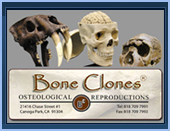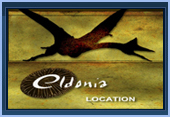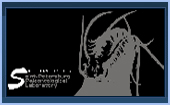화석명 : 황철치환된 암모나이트 노둘 (pyritized split nodule Ammonite)
분류(Division) : Class: Cephalopoda, Subclass: Ammonoidea, Family: Dactylioceratidae
학명(Name) : Dactylioceras commune
지질시대(Geological Time): Jurassic(172 million years old)
지층(Formation) : Upper Lias Formation near Whitby
발견지(Location): North Yorkshire, England
크기(Size) : 직경(Diameter approx) 92mm
내용 : 닥틸리오세라스는 널리 퍼져있는 중생대 쥬라기(약 1억7천2백만년전)의 대표화석으로 일반적으로 적으며 크기는 보통 직경이 65mm정도이다.
이종의 늑골(격막)의 껍질은 매우 단단하며, 이 늑막은 중간에서 약간 바깥으로 있다(암모나이트의 돌기/내부 형태가 당시에는 매우 다양한 스타일이 있었지만 이후로 계속 살아갈 수 있었던 스타일은 닥틸리오세라스 스타일이란 말이다). 비록 이 종은 1억8천만년전에 멸종했지만 전체 그룸은 공룡이 멸종했던 시기인 백악기말(약 6천5백만년전)에 멸종되었다. 이때까지 수 많은 스타일의 암모나이트를 복제하게 되었다.
닥틸리오세라스는 아마도 저서성으로 바다 바닥을 기어 다니듯 천천히 유영하면서 살았을 것이다. 이들은 많은 알을 낳고는 죽었을 것으로 생각 되어 진다. 마치 현재의 오징어류 처럼..
이들이 죽고 나면 껍질(시체)은 후기 쥬라기 바다의 한곳으로 모아졌을 것이다.
닥탈라오세라스는 거의 모든 대륙에서 발견되고 있고 있으며, 암모나이트 중 가장 성공한 삶을 살았던 종이다. 이들 영국, 독일에서 발견되는 매우 좋은 표본은 유럽전역에서 풍부하게 발견된다. 다른 암모나이트와 같이 이 종은 중생대 쥬라기의 표준화석이다. 닥틸리오세라스는 손가락을 표현하는 그리스어에서 유래하는데 이것은 암모나이트 격실의 모양을 나타내기도 합다.
이 화석은 황철화(pyritized)된 암모나이트 화석으로 표면이 아름다워서 더욱 인기 있는 화석 표본이다.
This is a fossilized Ammonite from the early Jurassic (Lias) period nearly 200 million years ago. This is species Dactylioceras Commune from near Whitby in North Yorkshire, England. This is a nice quality, partly pyritized split nodule specimen with very nice detail.
Dactylioceras was a widespread genus of ammonite from the Jurassic period, approximately 172 million years ago (mya). They are generally small, averaging 65 mm in diameter.
Dactylioceras has a strong, ribbed shell. The ribs are slightly inclined forward, running over the outer edge, and either simple or forking at outer end. Though it eventually died out 180 mya, their style of ribbing was copied by numerous subsequent ammonite genera until the whole group became extinct 65 million years ago with the dinosaurs.
Dactylioceras probably lived by scavenging on the sea floor. Mass mortality specimens of Dactylioceras are common, and perhaps suggest that these ammonites may often have died shortly after spawning. The dead shells were probably gently washed up into a shell bank on the margins of the Lower Jurassic seas. Flow tank experiments show that Dactylioceras was probably a slow swimmer.
Dactylioceras has been collected from almost every continent, and was one of the most successful ammonite lineages ever. They are abundant throughout Europe, with exceptionally fine specimens found in England and Germany. Like many other ammonites, the genus Dactylioceras is extremely important in biostratigraphy, being a key index fossil for identifying their region of the Jurassic.
The name Dactylioceras comes from the Greek dactyl, meaning “finger”, and refers to the shell’s branching ribs.













































 수량을 선택해주세요.
수량을 선택해주세요.





































